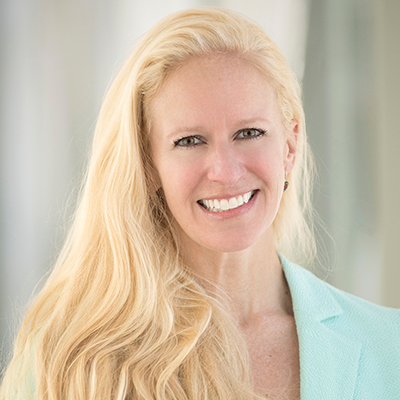 Dr. Adrienne Boissy's title at the Cleveland Clinic is chief experience officer, and her mandate is to improve and optimize the patient experience. But one of Boissy's strongest contentions is that the physician experience is important too -- in fact, it's intrinsically linked with the experience of the patient.
Dr. Adrienne Boissy's title at the Cleveland Clinic is chief experience officer, and her mandate is to improve and optimize the patient experience. But one of Boissy's strongest contentions is that the physician experience is important too -- in fact, it's intrinsically linked with the experience of the patient.
"I think there’s absolute clarity for me and for this organization that there is no patient experience without a caregiver experience," Boissy told MobiHealthNews. "And right now our caregivers are hurting in a number of ways. And part of my role is not just exploring how I can expand the roles of our caregivers, but recognizing that if I go to a bunch of caregivers and say ‘Be more empathic, you have to be nicer, I’m going to hold you accountable for it’ that doesn’t work."
Boissy will be sharing some patient engagement insights at the Digital and Personal Connected Health forum at the HIMSS annual conference on February 19th and 20th in Orlando.
[Don't miss out on the premier digital health event at HIMSS17 -- check out our lineup of digital health innovators and be sure to register for the event when you sign up for HIMSS!]
The fact that Cleveland Clinic has a Chief Experience Officer at the C-level is a testament to the way the organization prioritizes patient-centricity. But Boissy's journey to that position has been an interesting one.
"I’m a neurologist by training, so I was always fascinated by the human brain and how we make decisions, how we assess the environment around us, how we build assumptions, and that led me down a road of studying the brain for a lifetime," she said. "During my training I had the experience of walking into patient rooms and walking out and having the discreet sense the patient had no idea what we had said. So I took a masters program in bioethics because I thought that would maybe bring me closer to understanding why we do what we do in healthcare."
Drawing on her experiences as a clinician and her studies of both how people think and bioethics, Boissy thinks that one of the current road blocks to patient engagement is the gulf of misunderstanding between physicians and technology vendors.
"A lot of times when I talk to vendors in the IT world, they talk about how difficult it can be to get into an organization and how sometimes it’s really difficult to work through clinician barriers," she said. "...I think we need to recognize that as we’re asking people to be creative and innovative, and embrace new technology, if they’re exhausted or spending too much time doing administrative work, they’re not going to run to you with open arms. And yet, if products or capabilities can be positioned in such a way that they make the physician’s lives easier and they really deliver on that promise, we’ll be in good shape."
Additionally, physicians and technology vendors aren't even always speaking the same language when they talk about engagement.
"if you’re talking to technology vendors and you ask them how they’re capturing engagement, they’ll tell you downloads or clicks," Boissy said. "To me that’s probably a poor surrogate to whether someone is getting maximum benefit from all the resources available to manage their health."
[Join innovators from Cleveland Clinic, Intermountain, Partners Healthcare, Cedars-Sinai and more! Don't miss out on the premier digital health event at HIMSS17 -- check out our lineup of digital health innovators and be sure to register for the event when you sign up for HIMSS!]
The solutions to bridging that divide between tech vendors, providers, and -- ultimately -- patients aren't novel. They come down to better communication, better collaboration, and better design. Boissy promises to talk about them in more detail at the event. But hospitals hoping to reap the benefits of patient engagement need to start by recognizing the importance of engaging their providers first.
"If we went around creating a bunch of cool technology and we have the most engaged patients ever, but we have a bunch of walking dead clinicians, I don’t know what we did, and we certainly won’t be maximizing the potential of that relationship," she said. "It’s not about the technology, it’s about the experience we’re building around it."



















